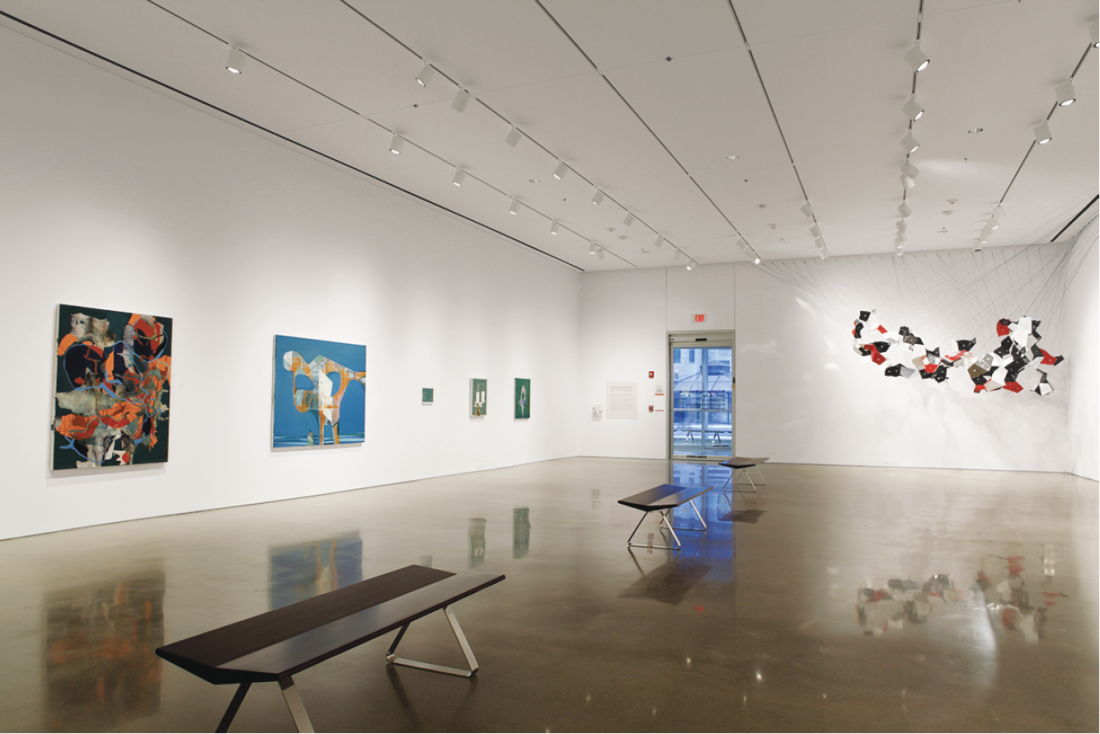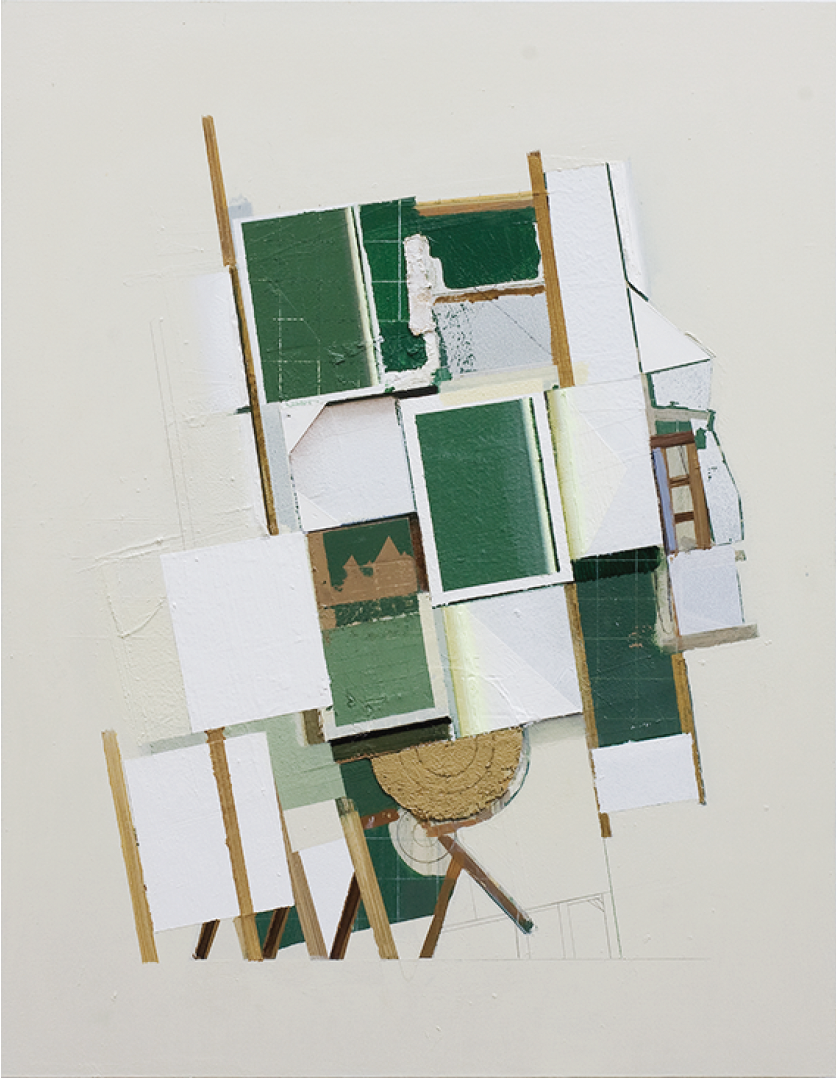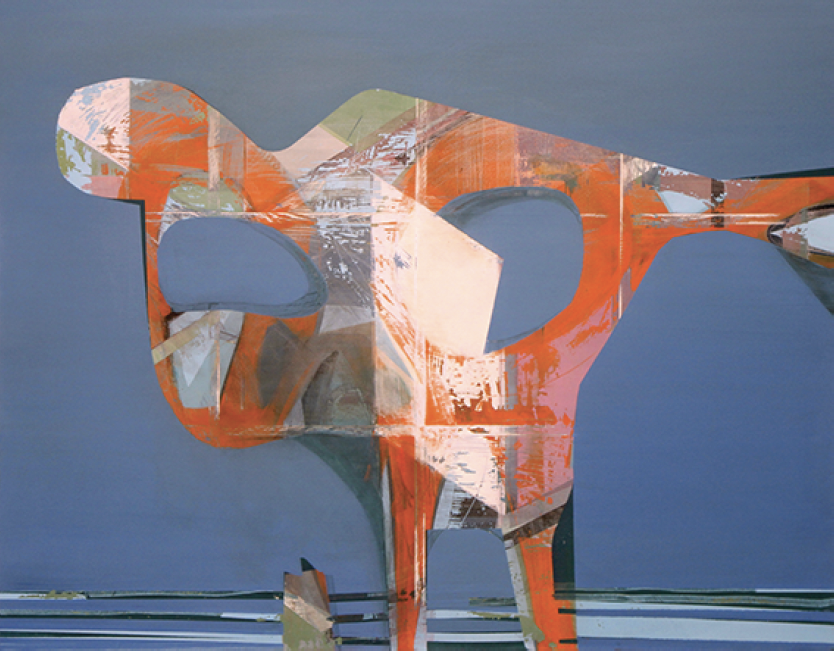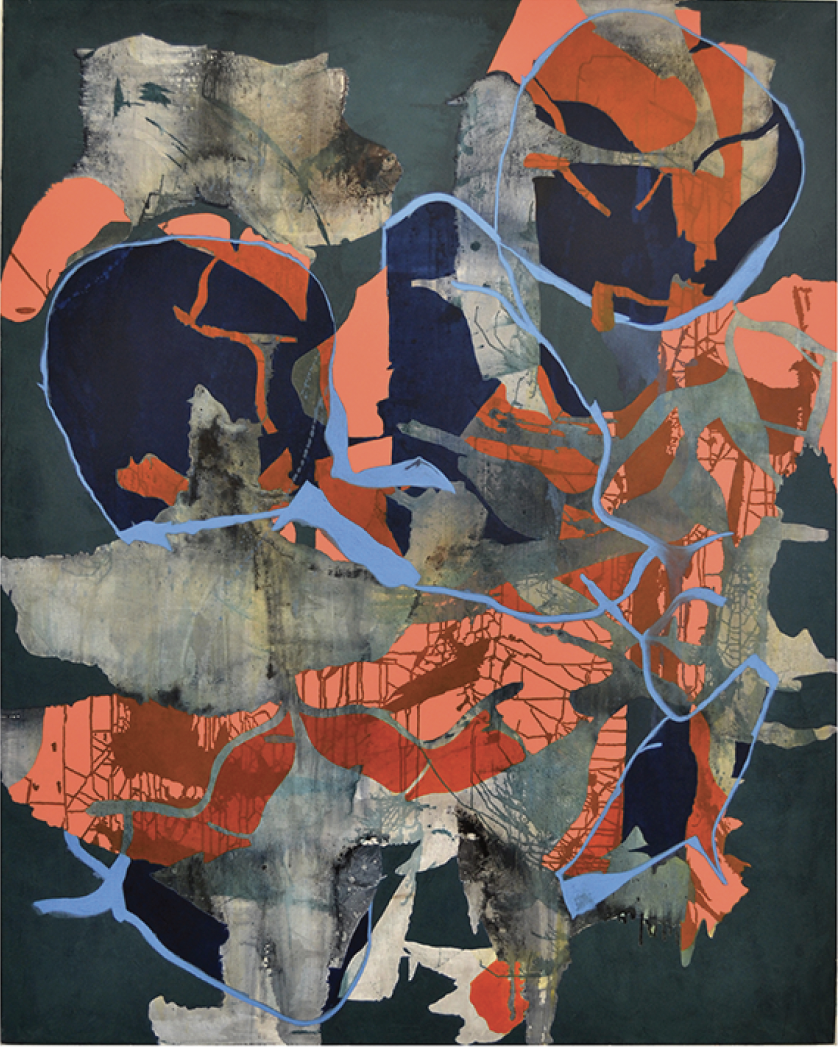“Re-Configuring Abstraction”
Narrative art from Winnipeg reached a height of recognition with a large show at La Maison Rouge Museum in Paris last year. What happens next? My guess is that, like everywhere else, every kind of art is going to continue to be made in Winnipeg and that each genre may have its turn in the spotlight, or not. Curator Mary Reid’s “Re-Configuring Abstraction” exhibition will likely encourage new abstract art in Winnipeg and also perhaps a re-evaluation of local art history. A season of Winnipeg abstract painting may be nigh.

“Re-Configuring Abstraction,” installation view, School of Art Gallery, University of Manitoba, 2012, Photograph: Paul Hess
Abstract art tends to be placeless, and when arguments for abstraction pit internationalisms against regionalisms the local often gets lost. Abstraction on The Prairies has often been linked to the flat landscape, but an ideology of pure abstraction “taints,” if I may use that word, every discussion of abstract art, and would work against such references. Indeed, ideologies of abstraction as art are hard to think around, and coherent regional histories of abstract art are hard to formulate. Deep within the ideology of abstract art is the conviction that it is an international type of art, and so new generations tend to favour an international and not local matrix for discussions of their work.
There have been abstract painters in Winnipeg since the days of Bertram Brooker in the 1920s and 1930s. Successive generations have included William McCloy, Richard Bowman, John Kacere, Robert Gadbois, Don Reichert, Tony Tascona, Frank Mikuska, Bruce Head, Robert Sikowski and Diane Whitehouse, some of whom are mentioned in Mary Reid’s catalogue essay. However, connections to past Winnipeg art will always be fuzzy unless a notion of local art histories is accepted by abstract painters themselves.

Dil Hildebrand, Module, 2012, oil on board, 68.5 x 53 cm, courtesy Pierre-François Ouellette Art Contemporain, Montreal
Holger Kalberg’s art had no connection to Winnipeg before he was recently hired as a professor at Winnipeg’s art school. Like McCloy’s generation, who were hired from elsewhere to staff the old Winnipeg School of Art, Kalberg became a Winnipeg artist instantly by being hired by the University of Manitoba. He comes closest in this show to local abstraction-as-landscape traditions identified with, for example, certain works by Winnipeg artist Don Reichert. Kalberg’s paintings, like Reichert’s abstracted landscapes, may not be “abstract art” at all. I see Kalberg’s works as beautifully painted tributes to modernist sculpture in what could be prairie settings. They are meta-abstractions, paintings about abstract art. (Note: Reid includes a hanging sculpture by Kalberg that does range into pure abstraction.)

Holger Kalberg, Prop 3, 2012, oil on canvas, 139.7 x 177.8 cm, collection of Jeremy Caddy
Kalberg shares a love of layering and scumbling paint across a surface, cubist techniques of fracturing and spatial play with the other artists in this show, except Derek Dunlop, whose conceptual art painting drops out of this exhibition’s hidden technical mandate, which I’d describe as favouring complex paint application. Dunlop’s grids of repeated paint patterns, in some instances applied like cake decoration, eschew gestural application and visible erasures that leave a record of the painting process. Clearly Dunlop is not interested in presenting a technical display of painterly skills but a rather straightforward iteration of one painterly technique per canvas. Simply put: Dunlop’s conceptual painting is not like the others.
Dil Hildebrand, a Manitoban, left Winnipeg after a brief spell at art school here. He is a dazzling technician best known for his bravura trompe l’oiel paintings that won him the 2006 RBC Canadian Painting Competition. His recent grid work paintings play with architectural conventions as metaphors of painterly construction. The play with paint surfaces is still a play with illusion, flatness and three-dimensionality, but his references to cutting mats and architectural elements are also, like Kalberg’s painting, a rumination on specific objects, in this case architectural. Hildebrand is not, and never was in any sense, a “pure” abstract painter.

Derek Dunlop, Untitled, 2012, oil and acrylic on canvas, 50.8 x 50.8 cm, collection of the artist
Krisjanis Kaktins-Gorsline got an undergraduate degree in Winnipeg and is the youngest artist here. He paints across, through and into grid patterns. Like Hildebrand, Kaktins-Gorsline is a wunderkind who can put his talents to any kind of painting. Here his art is closest to Dunlop’s in its impulses to purity. His stained and over-painted homages to the grid are made in a tradition that goes back to Malevich. The patterns in these paintings are always provisional, set up like a shell game to make you guess where they could go.
I will be excited to see how this exhibition influences local art, and to see if the artists in this exhibition form some kind of movement or collective. I’d also be interested to see how these painters reconcile themselves to their Winnipeg location and/or origins. Will the purist impulses of Dunlop and Kaktins-Gorsline split off from the heavily referential works of Kalberg and Hildebrand? I guess they already have. ❚

Krisjanis Kaktins-Gorsline, Inspector (Inspector), 2012, oil on canvas, 152.4 x 121.92 cm, courtesy of Battat Contemporary, Montreal
“Re-Configuring Abstraction: Derek Dunlop, Dil Hildebrand, Krisjanis Kaktins-Gorsline and Holger Kalberg was exhibited at the School of Art Gallery, University of Manitoba from November 13, 2012 to January 11, 2013.
Cliff Eyland is a Winnipeg artist.

